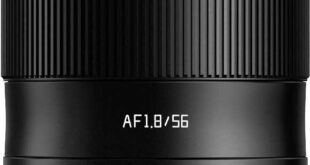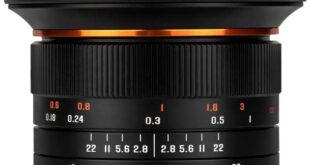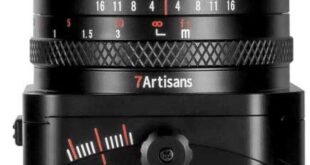Today the new Sony a7c is presented, currently, the smallest full-frame mirrorless camera that has haunted the rumor pages for quite some time. It’s amazing how many facts (and pictures!) have already surfaced – many correct, others speculated.
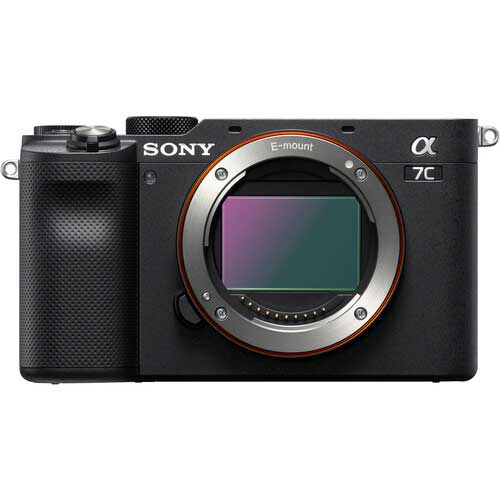
The relationship with the Sony Alpha 6600 is immediately apparent from its exterior – with the most important difference that it is not equipped with an APS-C sensor, but with a full-frame CMOS. The resolution is identical at 24 megapixels, but the pixels of the new α7c are larger, which results in a higher dynamic range and better noise behavior.
The move from APS-C to full format in this product range is not entirely unexpected. Back in September 2010, Toru Katsumoto, head of the Sony ILC division, said in an interview that it would be technically possible to integrate a full-frame sensor in the NEX cameras. That was eight years ago, the NEX series has since been replaced by the 6000 series, and now Toru Katsumoto’s prognosis has become reality.
Sony has a clear vision. With the appearance of the a7c (“c” stands for “compact”), the entire Alpha series, from the compact to the A7 and A9 series, is equipped with full-format sensors. So the annoying story with the crop factor and the “wrong” focal length information on the lenses is gone. And what’s more: All of these cameras have the same bayonet, which means that Sony has a total of 58 interchangeable lenses (38 for full format and 20 for APS-C) – complemented by countless interesting lenses from other manufacturers with the right connection.
The housing of the Sony a7c is practically the same size as that of the a6600 and, at weighs 510 g, its mother is only seven grams heavier. The structural basis of the a7c is a stable housing made of a magnesium alloy, in which, in addition to the sensor and the associated electronics, there is space for a new image stabilizer that vibrates in 5 axes. In addition, the housing is sealed against dust and water splash and can withstand tough use and humid climates. The power source is the same NP-FZ100 rechargeable battery as the a6600 with which (when using the display) about 740 photos or 215 minutes of video can be recorded.
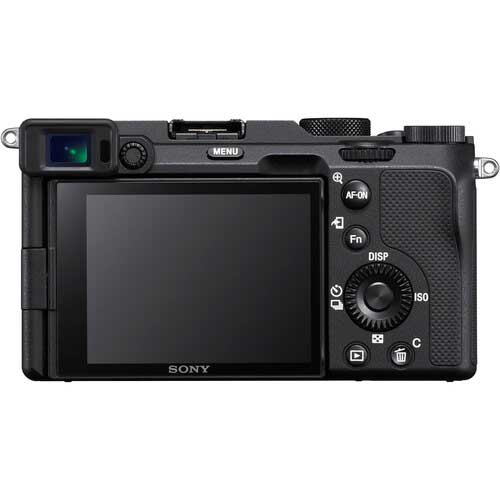
The sensor is the proven 24.2 MP semiconductor element with rear exposure, the data of which are processed in a Bionz X processor of the latest generation. According to Sony, the larger pixels compared to the a6600 result in a dynamic range of 15 steps and thus better noise behavior than with the a6600. You will gain a sensitivity level so that images with ISO 25,600 in corresponding low-light situations still give quite acceptable results. Perhaps the noise behavior will be improved with upcoming firmware updates, so we will leave it at this verbal statement for the time being.
The autofocus has also become significantly faster, covers 93% of the image area with 693 phase-detection sensors, recognizes human and animal eyes thanks to the genetic makeup of the Alpha 7R IV, and is able to follow them in real-time.
The series image function allows 223 JPEGs or 115 RAW images with AF/AE tracking in continuous mode with 10 images per second, which is mainly thanks to the new shutter and faster signal processing. With a minimum light limit corresponding to LW-4, the autofocus works quickly and reliably even in extremely low-light situations.
As far as the video functions are concerned, the a7c does not (yet) offer 8K, but a good 4K with 30p and a higher sampling rate of 6k (oversampling). The pixels are also fully readout in video mode without including neighboring pixels (binning). Frame rates of up to 120p are possible in Full HD mode. There is also an 8bit XAVC-S mode for easy post-processing, improved color reproduction, especially of the skin tones borrowed from the Alpha A7R IV, as well as recording options with S-LOG and HLG profiles.
In keeping with the trend and to the delight of vloggers and video producers, the new camera has been given a display that folds out to the side and can be swiveled 270° vertically. In addition, the video trigger is placed more ergonomically on the top of the camera; therefore it is also operated inadvertently less often.
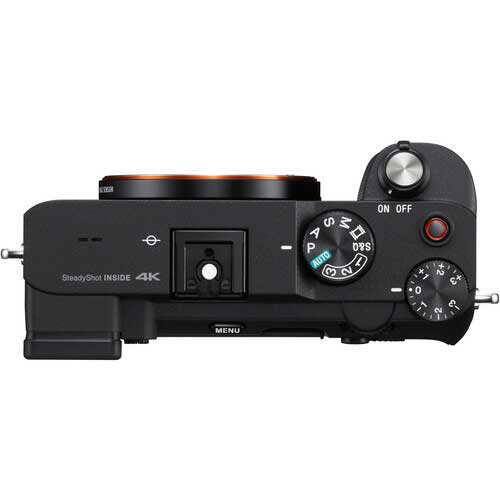
The camera generally makes a very user-friendly impression. The grip has become a bit smaller and feels more handy – which is a matter of opinion. The thumb recess on the back of the camera could have been made a little more pronounced. The rear control wheel, which was previously at the top of the camera and has now been integrated into the housing, has been rearranged. This left space for the exposure correction wheel, which is just as ergonomically placed as on the a7 III and similar models. The a7c has thus received an important additional adjustment element.
The other keys are arranged as we know it from almost all Alpha models. The menu structure is also in the usual Sony manner – no relearning for those who are upgrading or changing models. However, the miniaturization and the best possible compliance with the dimensions of the a6600 has the disadvantage that the viewfinder has lost its size. Although it has the same resolution of 2.3 million pixels, with the a7c magnification is 0.59x, while the a6600 had a magnification of 1.07x.
A new, particularly compact lens is offered in the kit with the a7c. According to Sony, it should be the smallest and lightest full-frame zoom. It weighs only 167 grams and is about half the size of the previous FE 28-70mm f/3.5 zoom. The focal length range of new FE 28-60mm f/4-5.6 is ideal for most subjects, and the speed of 4.0 to 5.6 is sufficient for general applications. Thanks to its retractable construction, in which the inner lens mount is retracted into the outer one, it is very compact, which means that the a7c can be stored in a small photo bag and can be taken with you on all occasions.
The new Sony HVL-F28RM external flash unit with Advance Distance Integration (ADI) flash metering is also available for a7c. The device has a guide number of 92′ at ISO 100 and 50mm, along with a built-in 2.4 GHz radio transceiver.
The new Sony Alpha a7c offers 6000 series owners an opportunity to switch from APS-C to full format and to gain more image angles with the existing lenses. Obviously, the a7c has evolved from the a6600 – they are so similar that every 6000 photographers will immediately find themselves at home with the a7c. The cameras are practically the same size, the menu structure is, as with all Sony cameras, practically identical with a few additions, and the operating elements are only slightly and more logically arranged for most users.
Sony a7C price and availability
The Sony a7C (ILCE-7C) will be available in silver from October 2020 and in black from November 2020 for $1,798. In the kit with the SEL-2860 it will cost $2,098 and is now available to pre-order via the Bhphotovideo.com website.
The HVL-F28RM flash unit will be available from November 2020 for $248 and it is also listed on the Bhphotovideo.com website. The FE 28-60mm 4-5.6 (SEL-2860) zoom lens will be available individually from January 2021.
 Technology News, Reviews and Buying Guides review, monitor review, tablet review, laptop review, mobile review, smartphone review, buying guide,
Technology News, Reviews and Buying Guides review, monitor review, tablet review, laptop review, mobile review, smartphone review, buying guide,
